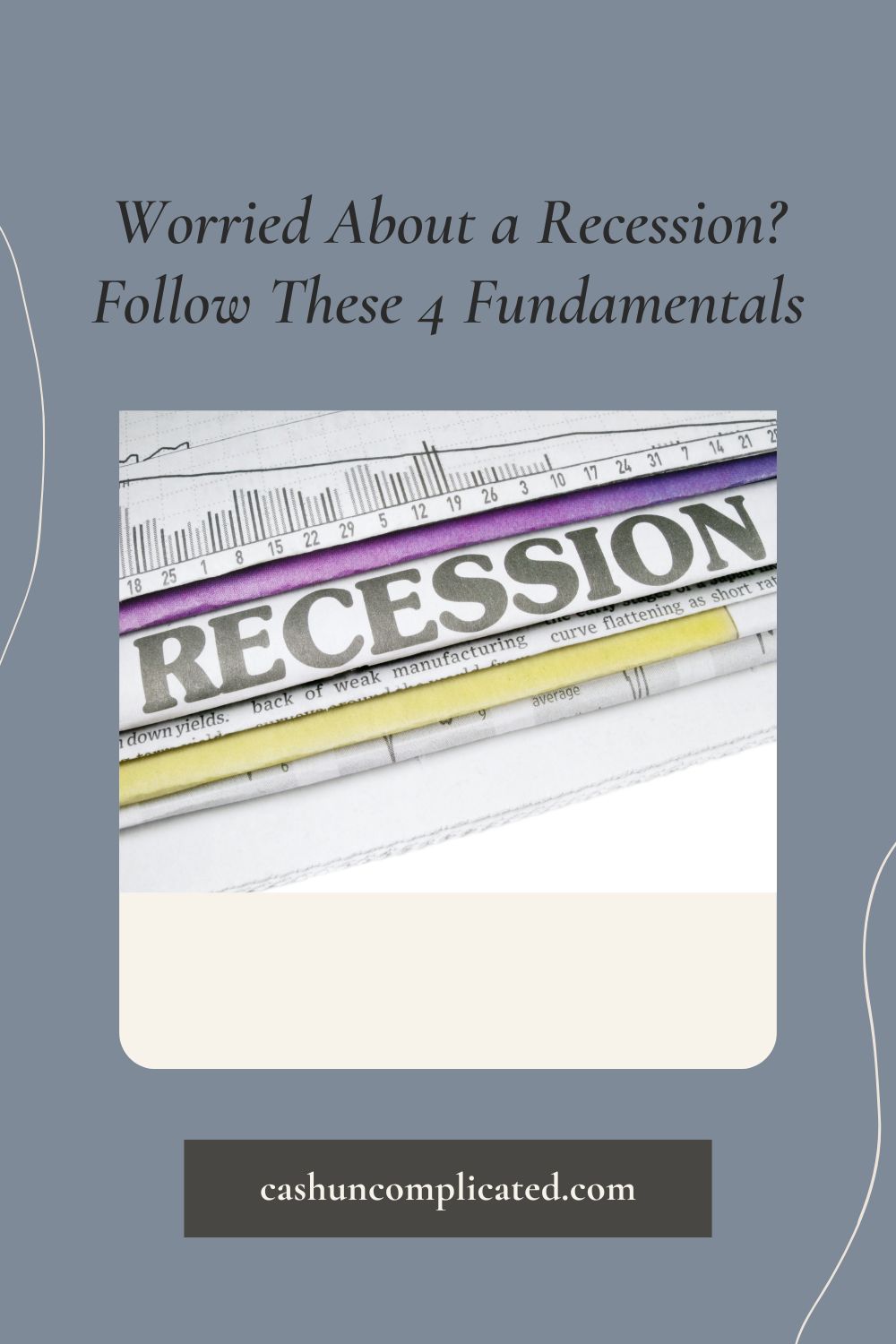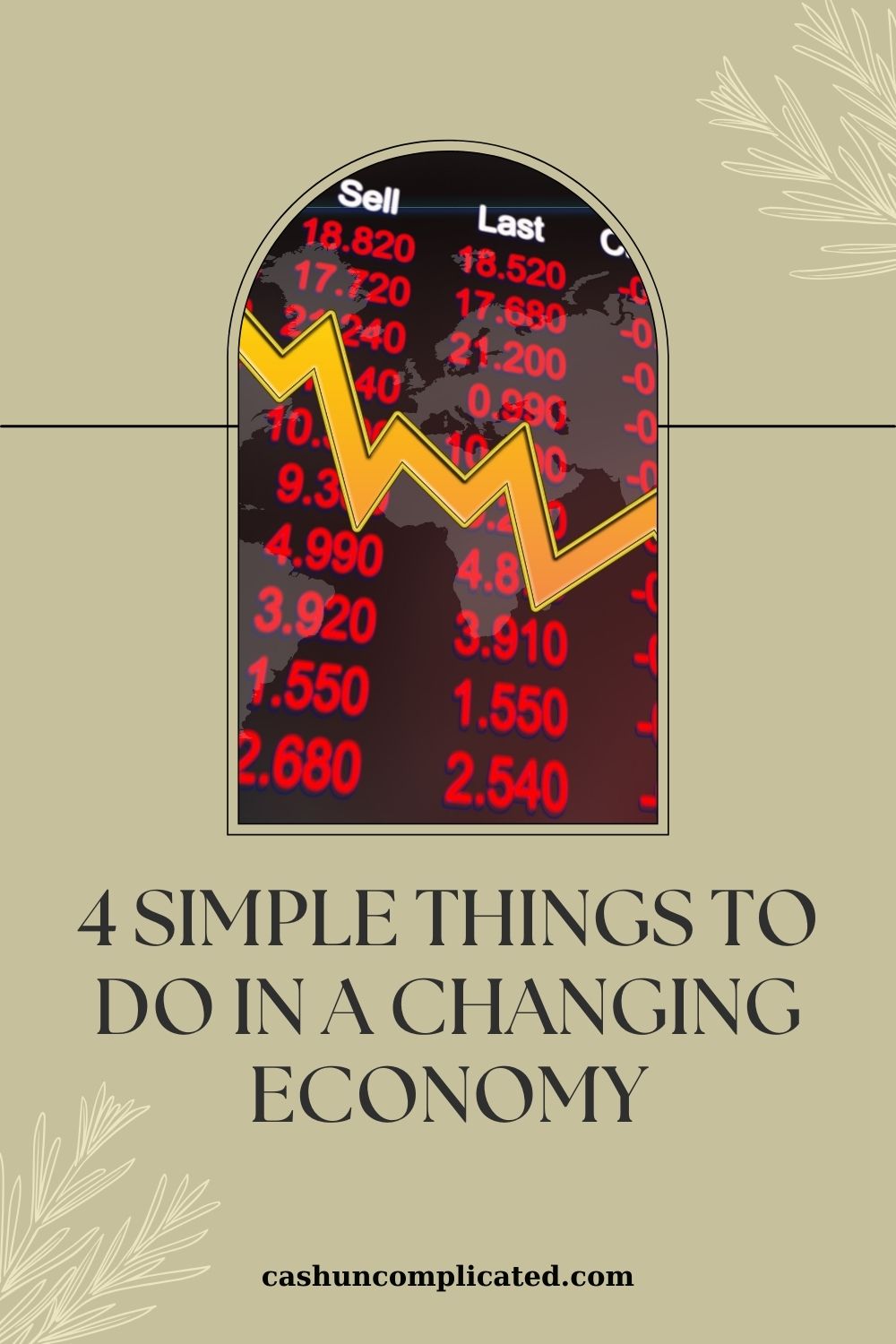One of the most common themes in the personal development space is the abundance mindset. The abundance mindset is the idea that there’s enough to go around—that there’s plenty of resources for everyone to thrive. For me personally, shifting my mindset from scarcity to financial abundance has produced very positive changes in my life.
There’s abundance in all facets of life, here are a few to provide some examples.
- Relationship abundance
- Financial abundance (focus of this post)
- Health and wellness abundance
- Work and professional abundance
Abundance Versus Scarcity
It’s easy to operate from a place of scarcity, and it can even become habit if we’re not careful. Here’s an example: Imagine you’re at a party and there are four boxes of pizza left. You haven’t eaten yet and you’re pretty hungry. You’ve got your mind made up that you’re going to have three pieces.
So you take three pieces and then take two more. You took the three pieces because you’re hungry, but then you took two extra and kept a close watch on them the rest of the night. Why did you take the two extra? Just in case you get hungry later, you want to have extra food. That’s operating from the scarcity mindset.
Continuing to use this example, someone operating from an abundance mindset would take just the three pieces to satisfy their hunger. Taking two extra pieces “just in case” isn’t a thought that would cross their mind.
If they get hungry later, they know there are many options, these are a few:
- Eat another type of food at the party
- Order more pizza
- Go out and get food
- Order another type of food
Although this is a basic example, the person with the abundance mindset has faith and confidence that they’ll be able to find food later. They can go out and enjoy the party and not worry about being hungry later. They have the skills and ability to solve that challenge (small as it may be) should it arrive.
What is Financial Abundance?
Financial abundance directly relates to the abundance mindset. Much like the analogy with the pizza, it’s the idea that you will find ways to be resourceful with money. You will not run out of money or come up short of money. You have the brainpower, skills, and wherewithal to earn money and make wise decisions with your money.
Someone with this mindset knows they may even make mistakes with money from time to time. But they also know what mistakes are a great opportunity for learning and doing even better. A real estate investor who underestimates building costs will learn from their experience and not make that mistake again.
Their failure with a low-level project will turn into a great learning experience for when they work on larger projects. Mistakes are seen as an opportunity to learn, rather than a permanent failure.
Financial Abundance Mindset: 13 Ways to Get It
Number One: Gratitude
To begin the list, let’s start with one of the most basic and easiest things to participate in—gratitude. Be grateful for what you already have. That includes financial resources, health, social capital, friendships, and much more.
When we practice gratitude, abundance has a way of coming to us. We attract it.
On the contrary, not practicing gratitude has a way of repelling abundance.
Gratitude is a mindset of appreciating what we have. It doesn’t mean never setting goals again or striving for better, but it is showing appreciation for what we already do have.
Number Two: Attitude
Think about someone close to you that has a negative attitude about money. Maybe a family member or a close friend. What is their attitude about money?
Is it that money is scarce and every cent has to be hoarded away for “someday?” Or maybe it’s that financially successful people only think about money and spend every waking hour trying to make a buck.
Now think about someone who thinks more positively about money. This could even be you. The person with the more positive attitude says things like:
- I can make money and spend time with my family too
- Provide value to others and the money will come
- Investing will provide me with financial freedom
- A positive attitude about money is the foundation of a financially abundant mindset
Be hyper aware of your attitude and how it influences your thoughts and perceptions about money.
Number Three: Be Intentional
A mindset of financial abundance is greatly aided by being highly intentional. Being intentional with money includes:
- Automating your income
- Consistently investing
- Value-based spending
- Setting goals
The act of being intentional shows a commitment to financial abundance and prosperity. It’s about making a plan, sticking to it, and allowing compounding to occur.
Without intentionality, life just kind of happens. People end up doing the same thing today as they did yesterday, and the day before that, and the year before that. It’s easy to fall into habits and ruts; intentionality prevents that from happening.
Number Four: Take Accountability
This is a category I struggled in for a long time. It’s no coincidence that as I began to take more accountability, my financial situation also dramatically improved. Taking accountability allowed me to go from a mindset of financial scarcity to a mindset of financial abundance.
When we take accountability, we take ownership. Ownership of the good and the bad. That puts us in a position of power because we have some control over the situation. And when we have control over a situation, we have the ability to make changes.
Victimhood on the other hand takes the power out of our hands and places it in the hands of an external factor. This may feel good at the time because we don’t have to deal with our own failures. But ultimately that creates a helpless feeling and doesn’t help us advance.
Number Five: Be Aware of Scarcity
I’m a believer in goal setting, which is a way of instructing your mind on what you want to have happen. There is tremendous power in creating an idea, setting a goal, and working towards that. It’s also important to consciously be aware of what you don’t want.
If you are seeking financial abundance, it’s helpful to be aware of what financial scarcity looks like so you can actively avoid it. Examples of financial scarcity:
- Hoarding money just to accumulate more
- Stressing about predictable expenses when you already have a financial plan in place
- Depriving yourself of experiences you’ve already saved for and can easily afford
Financial scarcity is especially important to be aware of if you grew up in a household with this mindset. It’s natural to want to fall back to our comfort zone, which for many of us is the way we grew up.
Even though I’ve studied personal finance and mindset for many years now, I still fall back into the trap of financial scarcity from time to time. Fortunately, I’m much more aware of it now so I’m able to recognize it earlier than I used to and take action against it. It’s taken years of study and training to actively avoid the scarcity mindset.
Number Six: Set Goals
Goal setting provides a roadmap for your mind to take action. Goals are so important that I devoted an entire chapter to them in my book Cash Uncomplicated. Setting goals puts our thoughts and dreams on paper, and helps to make them a reality.
The great thing about goals is that the only limitation on them is your mind. Create goals where you’re playing not to lose and you’ll get small results. Create goals with an abundance mindset and achieve big results.
So many of us have preconceived notions of what we can and cannot do. Those beliefs may come from our family, friends, education, or a number of other areas. Maybe we were told by someone in high school that college wasn’t in our future, when we really wanted to go to college. Or told by a relative to get a “safe job” with a steady paycheck, even if that job proves unfulfilling.
Wherever they come from, we have the ability to change some of those preconceived notions. We can change our mindset to whatever we want—setting goals is one of the best ways to start that process.
Number Seven: Reverse-Engineer Goals
After setting a goal, one of the next steps is to reverse-engineer that goal. In simpler terms, that means breaking down the goal into smaller, achievable steps that can be done on a daily, weekly, or monthly basis. These are a few reasons why we want to reverse-engineer goals, especially big long-term goals:
- Goals can seem unachievable and in the way distant future
- A big, worthy goal is going to take a long time to achieve
- Setting small goals gives us plenty of small wins that lead to the big win
Breaking big goals down into achievable parts give us something to work towards in the immediate future. Let’s use the example of a 30-year old with a goal of retiring at the age of 45. That’s 15 years away, which I think most people would agree is a long time.
Smaller Goals
Progress towards this goal can seem non-existent if looking at it through a long term lens. However, breaking it down into much smaller goals shows the true progress being made.
If this 30-year old projects they need two million dollars by the age of 45, they can reverse engineer that goal and figure out how much they need to invest every month. The month can be further broken down monthly, weekly, or even daily.
At a 10 percent rate of return, this person would need to invest $58,000 per year to reach their goal of two million dollars over 15 years. That’s a challenging number to reach. Anyone that can invest $58,000 per year is doing something right.
To make the number less daunting, $58,000 can be broken down monthly. That would require $4,833 per month. Breaking it down by the week equals $1,115. And $159 by the day.
The investor seeking an early retirement in this scenario can look at their goal in a number of ways:
- $2 million in 15 years
- $58,000 per year
- $4,833 per month
- $1,115 per week
- $159 daily
This is a much less intimidating way to look at the goal and the wins come much more frequently than just the two million-dollar win at the very end of the 15-year period. Daily, weekly, and monthly wins are a great motivator to keep pushing towards the long-term goal.
Number Eight: Take Action
Nothing quite beats taking action. Not just in creating a financial abundance mindset, but in many other areas of life as well. Taking action means creating a plan, maybe doing some research, and then going out and doing it. Time is not wasted waiting for perfection or the “ideal time” to start.
The action oriented person knows mistakes will be made along the way, but that adjustments will also be made. They don’t worry about mistakes because they know mistakes are a way to learn, grow, and improve. Taking action involves having confidence and faith that things will work out if the plan is followed and the appropriate daily actions are taken.
This attitude naturally leads to not just a financially abundant mindset, but an abundance mindset in general. An action oriented person knows that the sky is the limit if the daily work is being done. Action leads to results, which lead to endless opportunities and abundance.
Number Nine: Track Your Net Worth
A quote by Peter Drucker reads: “What gets measured gets managed.” This quote directly relates to tracking your net worth. Tracking your financial progress on the way to a bigger financial goal is the measurement that gets done.
Tracking your net worth on a regular basis provides instant feedback. Feedback on various areas, including:
- The progress being made
- How much of the goal has been met
- Adjustments that need to be made
Insight into these areas allow us to see exactly how we are doing and make any necessary adjustments. It’s a way of keeping score as the game is being played. Depending on what the score is, we will make the necessary adjustments.
Those adjustments might be investing more, investing less, getting another job, going for a promotion, or starting a business, just to name a few. Without tracking, there are no such adjustments because we don’t know where we are in the process.
Another way to look at it is like a GPS. If you’re traveling from New York City to Miami for example, it’s very helpful to know how far along you are on your journey. That tracking will help you to make decisions like when to get gas, when to stop for food, how much driving will be done in one day, etc.
Number Ten: Pay Yourself First
Paying yourself first—this is something I’ve written about multiple times in my book and different blog posts. Paying yourself first gives several messages, including:
- You earn enough money to pay yourself first
- Bills and expenses will still get paid
- Enough money will remain for entertainment and living expenses
- Each month is a financial win
A big component of the financial abundance mindset is that there is enough money to invest, save, pay expenses, and have plenty for entertainment and other living expenses. There is enough money to do it all.
Related Posts:
Keep it Simple: 4 Financial Habits You Can Start Today
Automating an Inconsistent Income
How to Become a Millionaire in 10 Years or Less
Number Eleven: Give/Donate
Giving, or donating, is arguably the most difficult component of personal finance. Donating requires taking a portion of your earnings, whether they be via a job or investments, and giving it away. It’s taking hard earned money out of your hands and giving it to a cause or someone you believe in.
Psychologically, this is not easy to do. Especially for people raised with a scarcity mindset where there is real fear that there won’t be enough. Giving requires overcoming that mindset. In other words, it’s a transition from the scarcity mindset to a financially abundant mindset.
That transition requires a shift in attitude and behavior that there will be enough. Many experts recommend giving 10 percent or more of your income. Like other areas of personal finance, you don’t have to start at the full 10 percent. Try giving a little bit at a time and building up the muscle until you reach the level you want to be at.
Number Twelve: Belief
As we move down the list of how to create a financial abundance mindset, it’s impossible to ignore something that seems obvious and simple—but is much more complex than meets the eye. What I’m writing about is belief. In order to develop an abundance mindset, there has to be belief.
Belief changes behavior and eventually molds into a mindset. That snowballs into strengthening the belief and engaging in more behaviors that support the belief. Belief is the starting point. It’s the first step in removing old ideas about money, especially the old ones about scarcity and not being enough.
Not only is belief the first step to developing a financial abundance mindset, but it’s also something that will stay with you for the duration of your financial journey. Belief is what keeps people going through the good, average, and not so good times. It’s what maintains the abundance mindset and becomes a way of life.
Number Thirteen: Trust in the Process
Similar to belief, trust in the process is a critical part of developing a financial abundance mindset. In short, you have to trust that the actions you are taking will lead to abundance. At times, especially in the beginning, it may seem like your actions are futile.
Beginning by investing only small amounts of money and feeling like you’re barely making it is hard. I’ve been there myself, and stayed like that for many years. It’s critical to have trust the process though–keeping the faith that things will improve. That’s one of the ways a financial abundance mindset begins.
Remember that compounding takes time. In the beginning, most of the growth comes from your contributions. Then the compounding almost seems to magically appear out of nowhere. Eventually, the compounding will likely exceed your contributions.
Related Posts:
Investing: Literally Purchasing Money With the Magic of Compound Interest
Financial Literacy: More Powerful Than Winning the Lottery
Conclusion
Developing a financial abundance mindset doesn’t happen overnight. The keyword here is developing. Which inherently requires intentionality and hard work.
Fortunately, anyone can work hard. Anyone can also be intentional and take the required actions. It’s my hope that posts like these provide some clarity on what areas to be intentional in.
Belief, trust in the process, pay yourself first, reverse-engineer your goals—these are just a few of the ways addressed in this post. Everyone will have their own things to add and subtract from the list. This post is meant to start an internal dialogue about what it means to have a financial abundance mindset. And more importantly, what actions to take to get it.
Do you have a financial abundance mindset?












